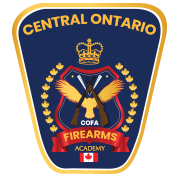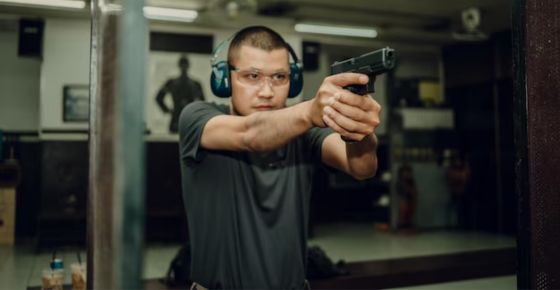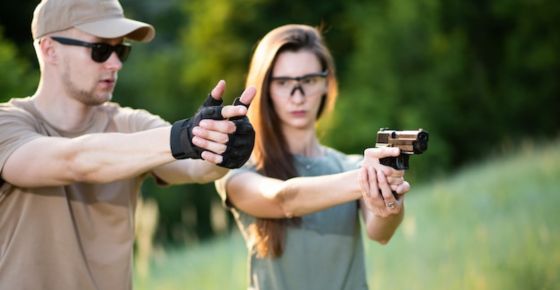Are you just starting out with guns? You know the difference between no restricted and restricted if this is the case. However, what do they signify, and how do they vary?
You may wonder about the difference between “no restricted” and “restricted” weapons. Nonrestricted weapons restricted firearms, and prohibited firearms are the three categories of firearms. Only the first two will be discussed in this article.
Restricted
Non-prohibited handguns fall under the category of restricted firearms. This includes some rifles and semiautomatic pistols. The total length is less than 660 mm, and the barrel length is less than 470 mm. Any weapon that can fold or extend to this size and still function reliably is included. Semiautomatic restricted guns shoot centre-fire ammo. Some additional types of firearms are also designated as restricted in the Regulations.
You will need to present documents to prove that you have a legitimate reason to possess a prohibited weapon, such as for target practice or competitions. For additional information, contact the Chief Firearms Officer in your area. Collectable use of banned guns is permitted. There must be checks and other regulations in place. Restricted firearms course with certain restrictions are allowed under some conditions, such as when they are needed for employment or to defend human life.
If you have a firearm designated as a relic in your possession due to past law, you may retain it but may not transfer the relic classification to anyone else. Antique guns are considered relics because of their rarity and historical significance. These need to meet some specific conditions. The vast majority of these weapons are pistols. The following is how the RCMP defines a gun as Restricted on their website:
Firearms Of Any Kind Other Than Handguns
Folding, telescoping, or otherwise collapsible firearms are intended or converted to function as functional firearms when their overall length is less than 660 mm.
No restricted
Standard rifles and shotguns that are not considered restricted or forbidden weapons are included in this category. There are few exceptions, but most long guns and airguns fall under this group. Typical examples are hunting rifles, sports shotguns, and air rifles with barrel lengths of at least 470 mm and overall sizes of at least 660 mm. In most cases, when people talk about “no restricted firearms,” they refer to long guns like rifles and shotguns. Non-restricted firearms course are those that fall into neither the Restricted nor Prohibited categories. Read on to find out why it is essential for gun owners to take these courses.
Safety
Taking a course on gun safety can help you avoid dangerous situations. Knowing the proper rules and practices for gun safety may reduce the likelihood of injury even if you do not possess a gun. To ensure everyone’s safety, those possessing handguns must complete a training program.
However, taking a gun safety course is another way to safeguard you while out. A concealed carry permit is no substitute for understanding how to safely and effectively use your handgun.
Your instructor will show you how to fire your weapon accurately and go over some basic gun safety guidelines with you.
Treat all weapons as if they are loaded and only pull the trigger when you are ready to fire.
Follow These Guidelines To Avoid Harm And Stay Safe
Courses in tactical training are designed to hone your capacity to remain focused and composed under pressure. When threatened, many individuals freeze in fear and do little to help, adding to the problem. In a survival situation, being able to make quick decisions is crucial. Having a keen mind is helpful in many aspects of life. Tactical training has been shown to improve both productivity and concentration.
Improves Capacity for Effort
It takes a lot of muscle to hold a gun steady enough to fire correctly, and most people don’t even know it. Guns differ in weight, but it will be tough to have a firm grip on your weapon when you are under pressure.
Strengthening your body and sharpening your aim are achievable goals of consistent gun range training with an expert.
Strength in the arms, back, core, and shoulders may all benefit from this routine. You’ll learn to balance your body weight and keep your centre of gravity low for more precise shooting. A firearms training course might be a novel method to gain muscle mass and strength.
Valid at Any Skill Level
Finally yet importantly, a person of any skill level might benefit from attending a course on gun safety. Classes on safely handling firearms are designed for students of all skill levels, even though visiting a shooting range for the first time may be nerve-wracking.
You can learn to shoot confidently, even if you’ve never picked up a gun. Even if you have been shooting for years, working with a professional to hone your skills and increase your confidence is always beneficial.
Contact with Nature
This health advantage is more relevant to those who participate in hunting. Because not all gunfights occur in open areas. However, the outdoors is an excellent place for anybody learning to shoot for hunting. You spend days outdoors, exploring new areas, hunting your prey, and covering great distances while carrying spoils.
That contact with nature significantly improves physiological and psychological well-being. Mentally, you will have a better mood and experience less negative emotions like tension, anger, anxiety, and worry. Reduced stress and discomfort in your body is another benefit.
Conclusion
The fact that tens of millions of individuals worldwide have access to a firearm attests to this. Learning to shoot a gun is a rite of passage for many people.
There are numerous individual benefits to gun ownership and shooting, regardless of the motivations behind people’s desire to do so. The positive effects on health are the most notable. This essay outlines the primary positive effects on your body and mind. COFA provides excellent resources for study and practice.
Also Read – All You Need To Know About Canadian Restricted Firearms Safety Course




